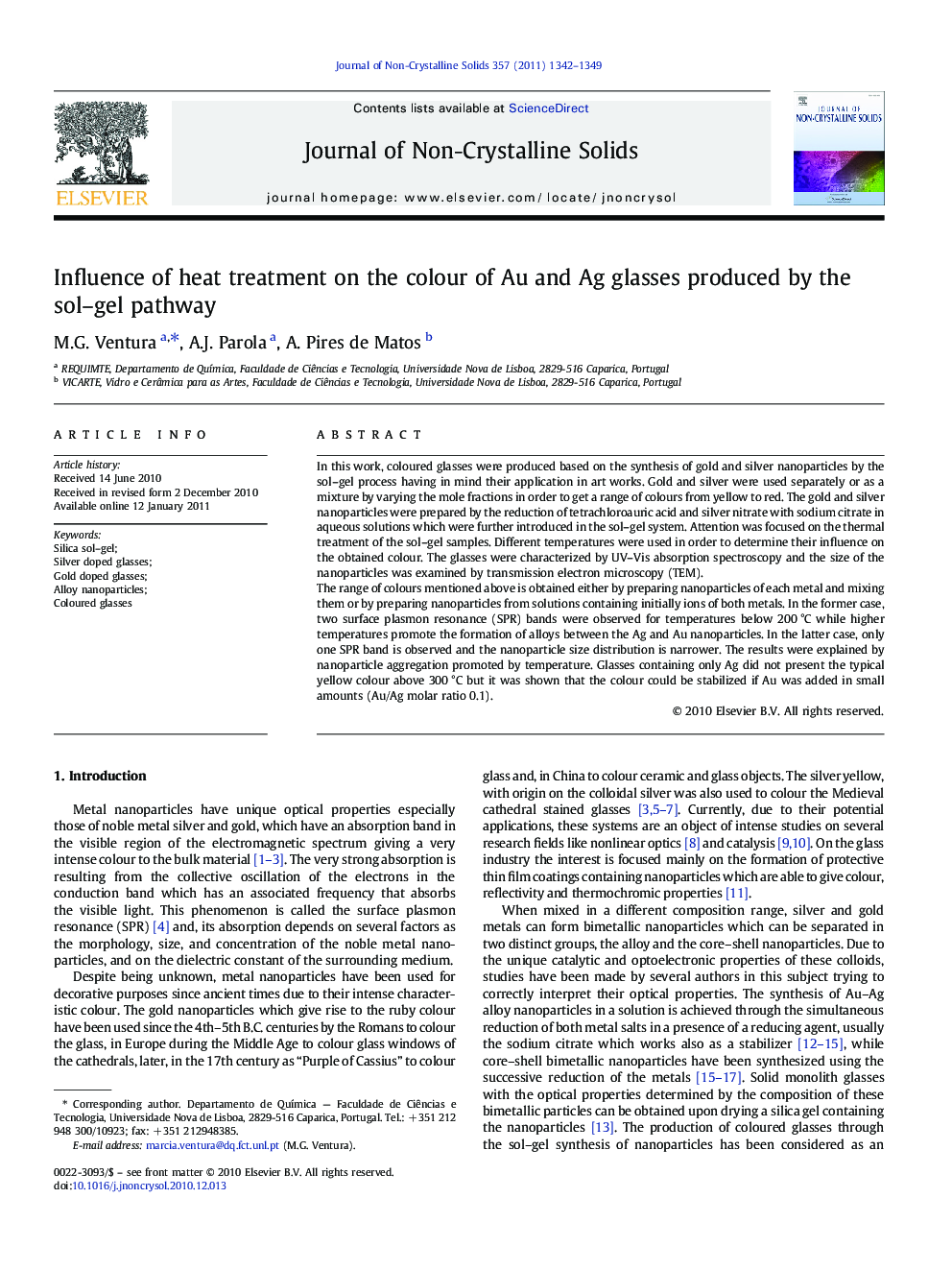| Article ID | Journal | Published Year | Pages | File Type |
|---|---|---|---|---|
| 1483014 | Journal of Non-Crystalline Solids | 2011 | 8 Pages |
In this work, coloured glasses were produced based on the synthesis of gold and silver nanoparticles by the sol–gel process having in mind their application in art works. Gold and silver were used separately or as a mixture by varying the mole fractions in order to get a range of colours from yellow to red. The gold and silver nanoparticles were prepared by the reduction of tetrachloroauric acid and silver nitrate with sodium citrate in aqueous solutions which were further introduced in the sol–gel system. Attention was focused on the thermal treatment of the sol–gel samples. Different temperatures were used in order to determine their influence on the obtained colour. The glasses were characterized by UV–Vis absorption spectroscopy and the size of the nanoparticles was examined by transmission electron microscopy (TEM).The range of colours mentioned above is obtained either by preparing nanoparticles of each metal and mixing them or by preparing nanoparticles from solutions containing initially ions of both metals. In the former case, two surface plasmon resonance (SPR) bands were observed for temperatures below 200 °C while higher temperatures promote the formation of alloys between the Ag and Au nanoparticles. In the latter case, only one SPR band is observed and the nanoparticle size distribution is narrower. The results were explained by nanoparticle aggregation promoted by temperature. Glasses containing only Ag did not present the typical yellow colour above 300 °C but it was shown that the colour could be stabilized if Au was added in small amounts (Au/Ag molar ratio 0.1).
Research Highlights► Silica sol–gel; ► Silver doped glasses; ► Gold doped glasses; ► Alloy nanoparticles; and ► Coloured glasses.
